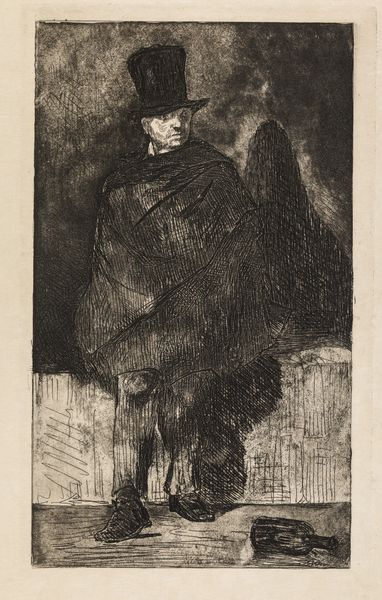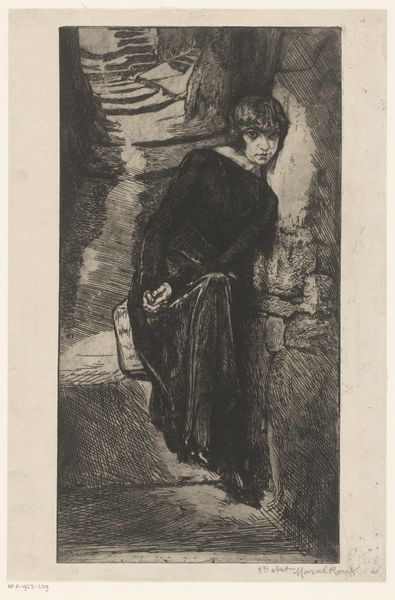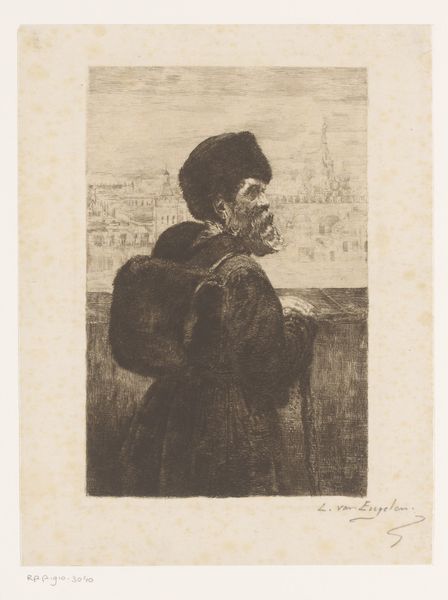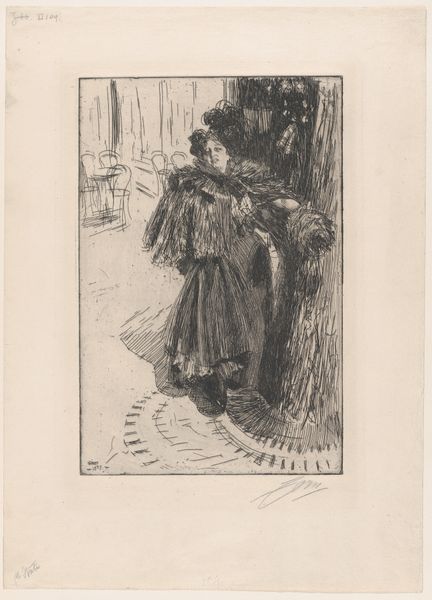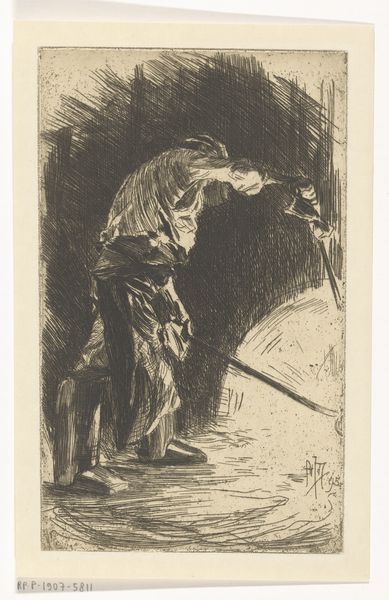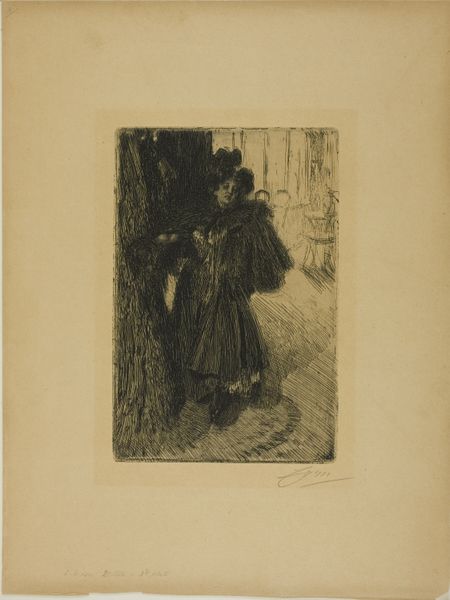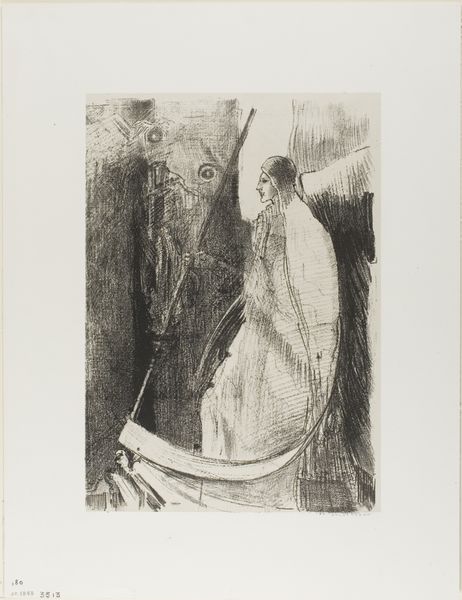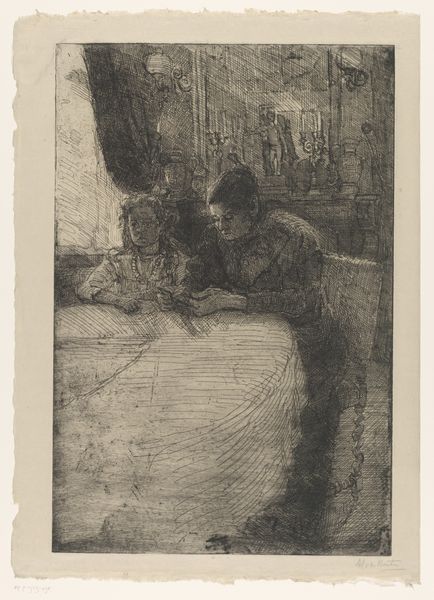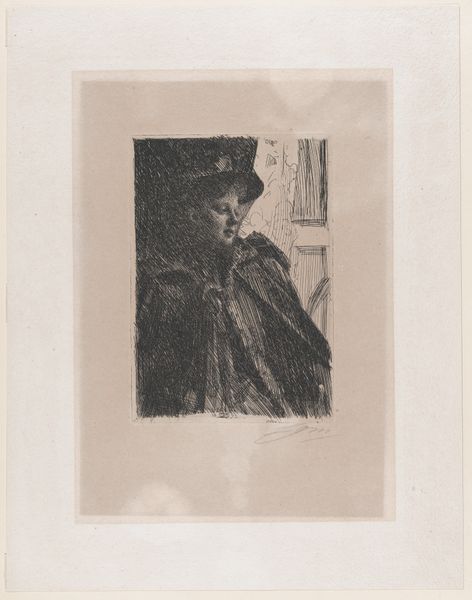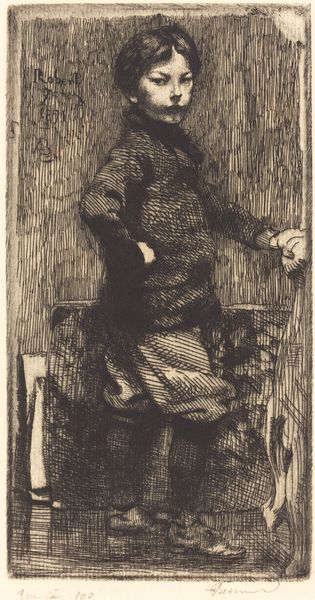
print, etching
#
portrait
# print
#
etching
#
landscape
#
figuration
#
symbolism
Copyright: Public domain
Paul-Albert Besnard etched this portrait of Robert de Montesquiou, a prominent figure of the Parisian elite. The most striking symbol in this print is the large, ornate vase beside Montesquiou. Vases have been ubiquitous symbols for centuries, evoking concepts of abundance and containment. Yet, the vase’s symbolism shifts, evolves, and reemerges in different forms. Think of ancient Greek amphorae depicting myths, or the still-life paintings of the Dutch Golden Age. The motif of the vase, filled or empty, often embodies the transience of life and the inevitability of decay. In a psychoanalytic light, it might also represent our deepest desires and fears, contained yet threatening to spill over. Here, the vase looms over Montesquiou. Its presence may suggest the sitter's own efforts to contain and cultivate his public image, a vessel of carefully constructed identity. Consider how, like the vase, cultural symbols persist, transform, and resurface, each time carrying echoes of past meanings while adapting to new contexts.
Comments
No comments
Be the first to comment and join the conversation on the ultimate creative platform.
